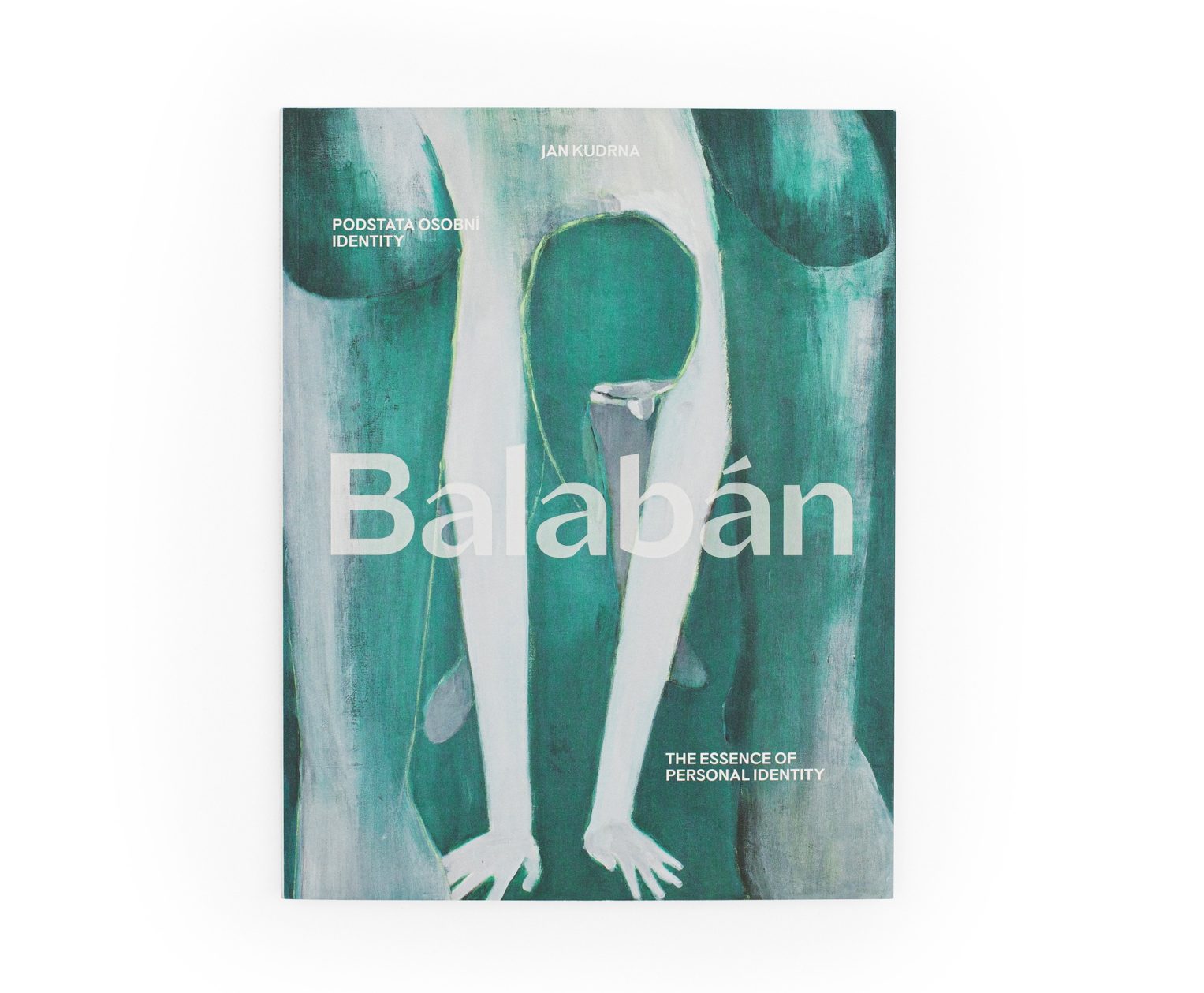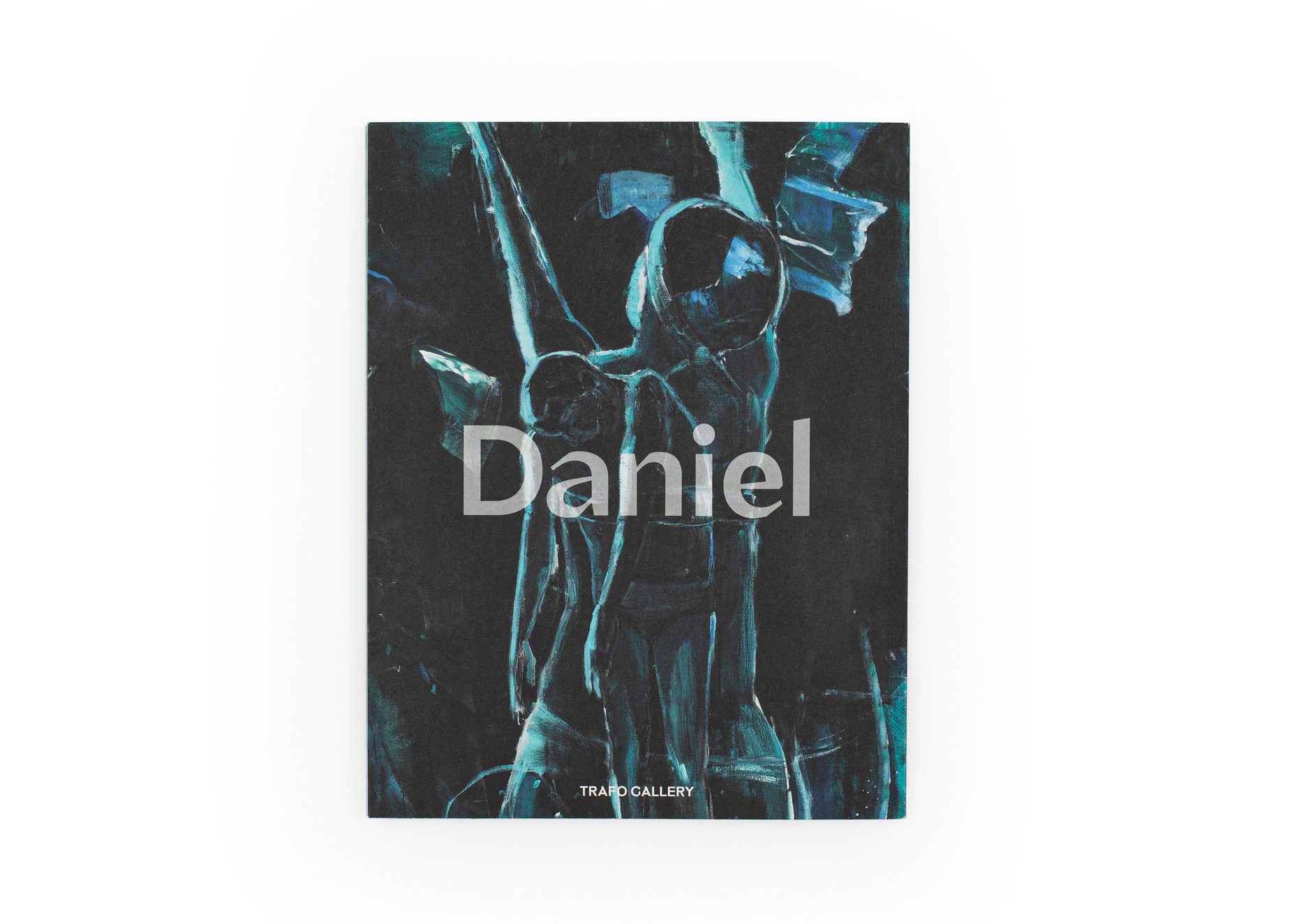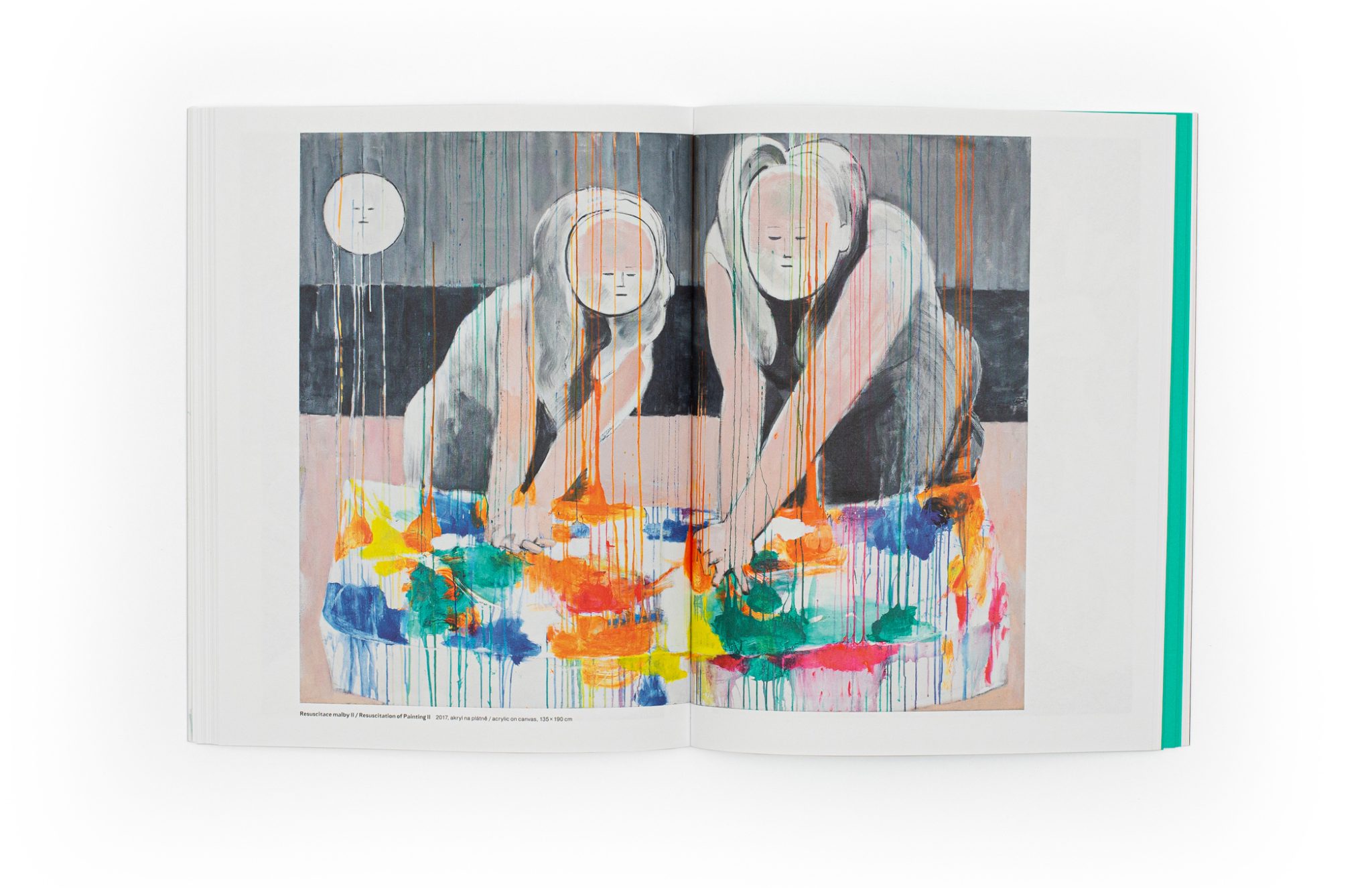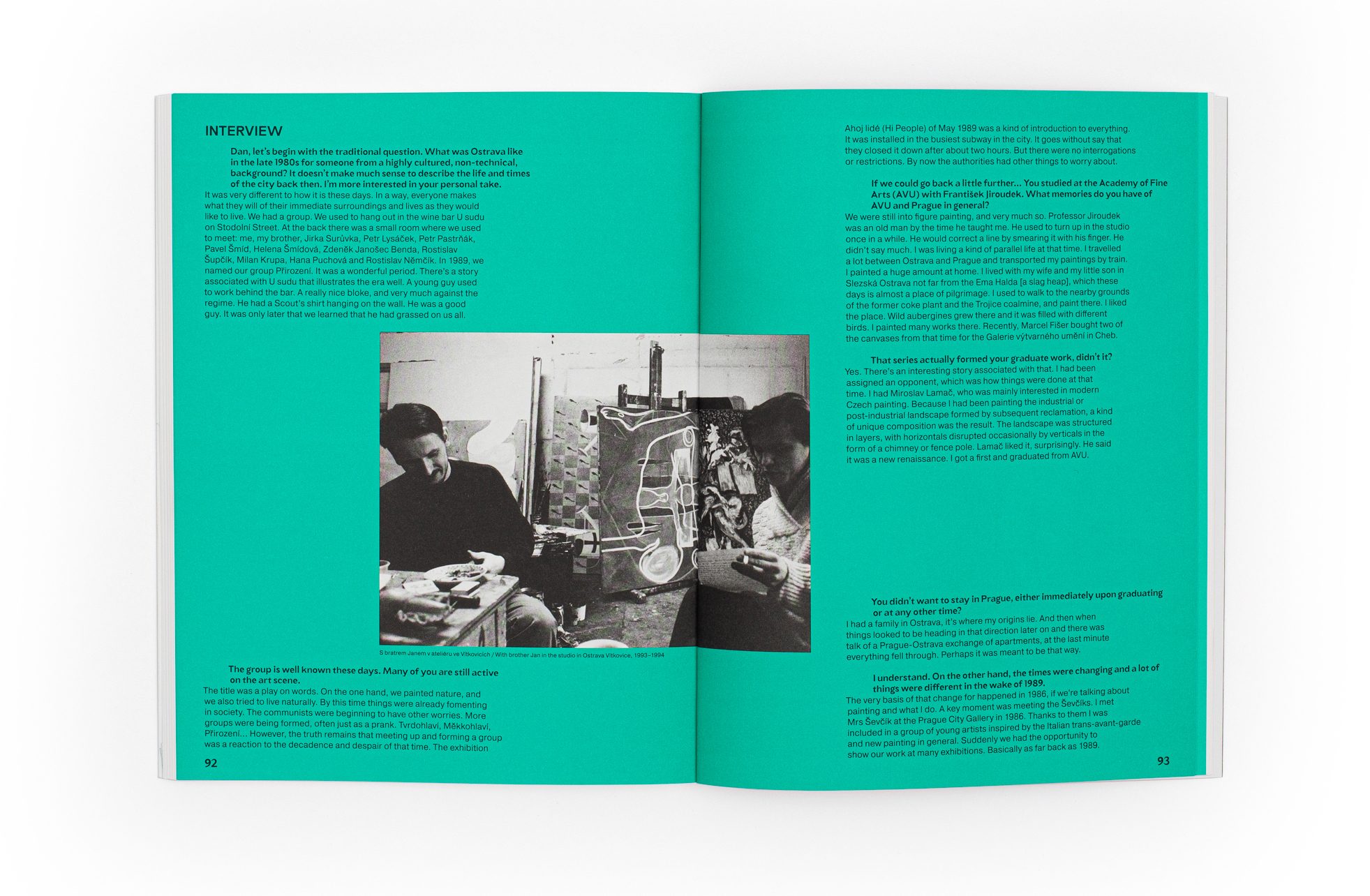



Daniel Balabán: The essence of personal identity

Solo exhibition and publication of the same name by Daniel Balabán (*1957), who in his works asks existential questions, examines himself and touches faith. He asks if it makes sense to be a painter, why he is here and if he can (or) believe in anyone. And is the existence of Christ even important in order for a person to believe what he really wants? The content level of Daniel Balabán's paintings oscillates in contradiction between the philosophical-existential poles, or rather arises from the aforementioned. Faith, or rather the Christian tradition, experiences genesis in Balabán's paintings. The beginnings of his concentrated work from the second half of the 80s of the 20th century have a center of gravity in a reduced form, which interprets fundamental themes of faith through a peculiar exaggeration, which in the following ten years moves to a position of sensitive and thoughtful irony. It is remarkable with how concentrated humility Balabán approaches painting, no matter how subtly he approaches the official beliefs of the faith between 1985 and 1995. In this period, he mainly combines two basic formal levels. In the mentioned beginnings, it is a moderate to ascetic painting, which, although it carries elements of the then wave of trans-avant-garde, is remarkably distinctive. Separated in terms of meaning, gesture and authentic originality of the depicted, as for example in the paintings Exodus (1988) or Darkness of the Cross (1988) and Mobil (1988). In the Dark Cross painting, we can even see a kind of compression of the coat of arms motif of faith in the form of a cross in the shape of sacral cubic and strictly functional architecture. On the contrary, in the painting Mobil, it is a compression into the form of an austere basic symbol of the cross, supported by a sketchy painting line, to which the surroundings are subordinated in the form of a backdrop scene built in favor of the first plan. In the painting Exodus, it compresses the emblematic symbols associated with the exodus of the Jews from Egypt. The second formal level of Daniel Balabán's painting, which has already been submitted, is the work prevailing from the mid-90s of the 20th century. The figure comes to the fore of the author's interest. The author abandons the slightly conceptual tone of his paintings. The figure becomes alive and material. Suddenly she is present with her own physical experience. In a certain way, it can be said that the actual essence of the plot suddenly takes place around the figures. This can be very clearly observed especially in the paintings Venus and Mars (1999), Zdeněk descending the stairs (1999) or Fatigue (2000). However, the essential remains. Balabán experiences painting immensely. With a great deal of delicacy and balance, he patiently spares gestures. In a certain way, he installs the plot sensitively. In this period, the analysis of juxtaposition begins to be a crucial factor in Balabán's work. With many authors, we encounter situations (realities) clearly defined in terms of meaning. We are often faced with a given and unchanging comfortable situation, where the author controls the process from a safe distance, which can (sometimes) negatively transform the overall situation of the work, even its essence. Daniel Balabán is free of calculus in this regard. He does not work with a predetermined sense of building the audience's confidence. In an unprecedentedly sensitive and human way, it tempts and disrupts the imaginary but perceptible border between safety and insecurity, restlessness and ruin. It is essential that the author does not resort to unnecessary acceleration of gestures and concepts in order to achieve effect and certainty. He can even physically enter his paintings. Both in terms of content, and in later years also formally in the form of own depiction.
In addition to reproductions, the book contains an interview between curator Jan Kudrna and Daniel Balabán.
Number of pages: 110
Curator / texts: Jan Kudrna
Production: Blanka Čermáková, Veronika Čechmánková
Graphic design: Katarína Jamrišková
Translation: Phil Jones
Proofreading: Tereza Hubáčková
Photographs: Roman Polášek, Ondřej Polák, Martin Polák
Print: Tiskárna Helbich, a.s.
Paper: Munken Lynx Rough 120g/M2, 300g/m2
Number of copies: 350 pcs
Published by Spolek Trafačka as its 35th publication
ISBN 978-80-908062-7-6
We thank Robert Runták for supporting the creation of this publication.
